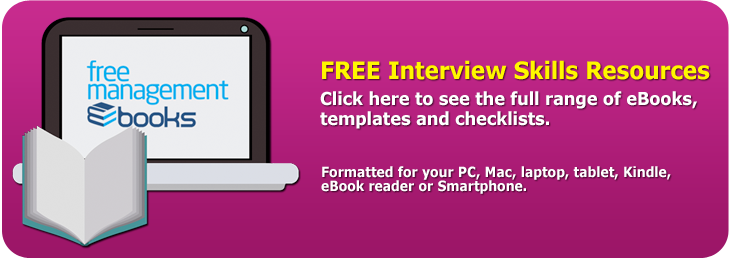Initial Preparation for a Management Assessment
The following four steps will ensure that you attend a management assessment with knowledge of the role and organization, as well as a clear idea of how you can 'fit in' and add value.
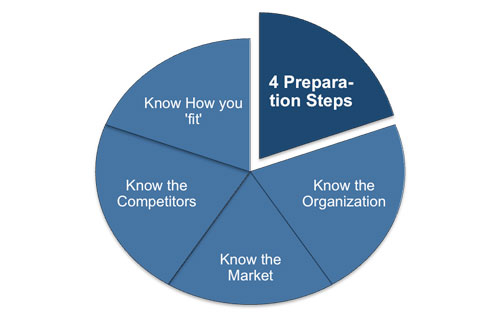 |
The depth and breadth of your research will vary depending on the amount of notice you have before your management assessment, but time spent on this type of preparation can have a substantial pay-off and you should aim to do as much as possible in the time available.
Where you are seeking an internal promotion you need to make sure that you have reviewed your previous appraisals and taken account of any recommendations they contain. Internal assessors will use a personnel file in the same way they would use a resume for an external candidate - that is, to form their initial impression of your capabilities.
Step 1 - Know the Organization
Much of this information can be gleaned from the organization's own website. It is amazing how much information you can gather from it to help you create a SWOT (Strengths, Weakness, Opportunities, and Threats) analysis. This is a strategy tool that will help you to clarify the internal and external factors that affect the organization.
You can search online to establish the mission statement and identify key personnel within the organization. In some cases this includes information that can help you to appreciate the aims of the executive and how they influence priorities within the organization.
Your analysis of these priorities can be confirmed by analyzing the summaries provided by the CEO and CFO in the organization's annual report. If you have the opportunity, it is often good to see how this data has changed over time. It also helps to see how their strategy has developed over the same period.
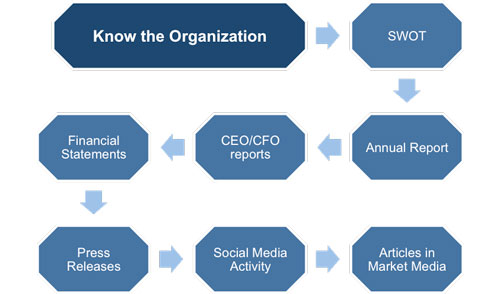 |
The financial statements contain all the basic data that you need to calculate simple performance, solvency, profitability, and investment ratios. This research helps you to piece together evidence of current policies and procedures and how they might impact the role. This often forms the basis of questions you can ask during an interview. It can also provide a strong indication of the prevailing culture, which you will need to understand if you are going to fit in.
You should also aim to put together a basic organizational chart if one is not included in the annual report or on the website. This can explain how a particular function is viewed within the organization. Is the department or division you are going to work for seen as a resource, cost, or service center?
Reading press releases that contain the organization's key messages and form the foundation of their public image can further substantiate this. Another excellent source of information to help you understand the organization is their social media activity. Which social media forums do they post to and what do these posts talk about?
All of this information can be brought together with the initial SWOT analysis to help you understand how the organization sees itself, what it considers important, and where it is going. Re-reading the job ad in the light of this information can help you to see the role in a wider context. This is important because you need to be sure that it matches your expectations and desires.
Step 2 - Know the Market
You should now have a clear picture of the organization, which is useful but needs to be extended to include the wider market that it operates in. The easiest way to do this is to read through current and back copies of the main industry press to gain an understanding of the main topics of discussion and concern. It can also be useful to look at how the national press describes the market and its main players. Although we are using terms like 'market' and 'industry' this step still applies to the nonprofit sector because even charities and NGOs are subject to external influences and operate in a market-like environment, one in which funding takes the place of profits.
Officially published information can be crosschecked with what is being said in blogs and social media comments. These sources can sometimes be at odds with more established media but tend to be ahead of the curve if something disruptive or controversial is in the offing.
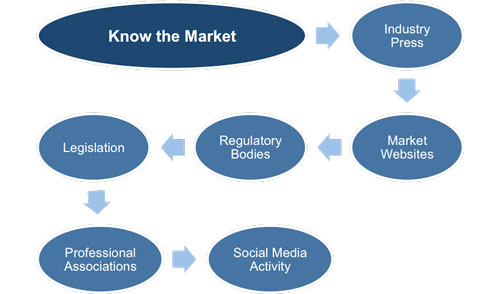 |
Looking into the activities of regulatory bodies and professional associations is useful in teasing out key issues that could have an impact on the market and those who operate in it. This also applies to proposed legislation the implication of which is usually discussed in depth long before being passed into law.
Each of these organizations will have websites and social media activity that can expand your knowledge base. The details you discover in this activity could be used in an interview either to answer a question or to ask one. Make sure you think carefully about your phrasing and have facts to support you otherwise it could be more damaging than helpful!
Step 3 - Know Your Key Competitors
Steps one and two naturally lead onto the third step - that of learning about your key competitors. The depth of your research will vary but as a minimum you need to know the key players in the market and the same basic information about each one. This includes their status, their recent performance, and how they relate to the organization - for example a threat, potential partner, etc.
You can use the same sources of information you used previously, including websites, press coverage, social media, annual reports, etc.
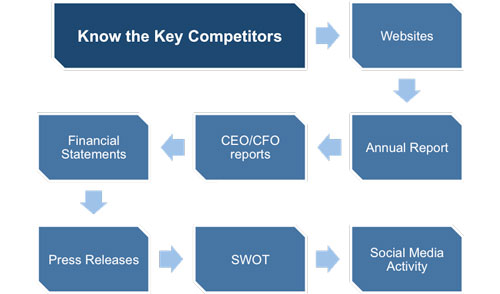 |
Using what you find from these three steps will help you to create a basic SWOT for these key competitors and develop your understanding of the market.
If you are just breaking into management, perhaps from a technical or supervisory role, then all of the above may seem like a lot of unnecessary work. However, these three factors - the organization, the market, and competitors - are the very things that senior managers spend their time thinking about. Having a sound understanding of them and being able to talk about them with confidence makes you a far more credible candidate for a senior role.
In addition to being able to answer and ask questions from a strategic perspective, this knowledge can give you kudos and credibility with your co-workers and immediate boss. It also gives you the capability to talk to senior people informally, over lunch for example, and mark yourself out as someone who deserves to be considered for a more senior role if one becomes available.
Step 4 - Know Yourself
With all the intelligence you have gathered so far you are now ready to prepare yourself. For each opportunity you must tailor your resume and portfolio to match the needs of the role and organization. Make sure you have carefully read and highlighted any significant words or phrases used in the advertisement, role description, and job specification. It is important to use appropriate or 'matching' wording in your resume so that whoever reads it can see that you possess the required competencies.
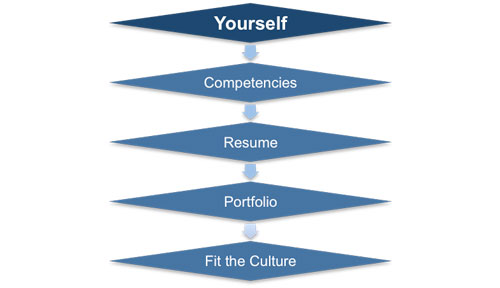 |
It also ensures that your understanding of the role requirements is precise and can be communicated back to the assessors during the exercises and interview.
For many roles a portfolio can be an effective tool to use during the interview. This is a collection of 'deliverables' (all 'all confidential items having been removed) that you have generated in your current role. A portfolio item may be a report, photo, press cutting, design, plan, or anything else that gives you the opportunity to show how you dealt with a problem. You can also describe how and why you undertook certain CPD tasks to develop or enhance a competency to the level of the role.
As well as preparing a resume and portfolio, you can use the information from steps 1-3 to make sure that you are up to date and fully conversant with the jargon, processes, and issues that someone in the role would be expected to know.
You may also be interested in:
Management Assessment | Assessment Exercises and Format | What Assessors are Looking For | Initial Preparation for a Management Assessment | Detailed Preparation for a Management Assessment | Professional Development and Assessment.

